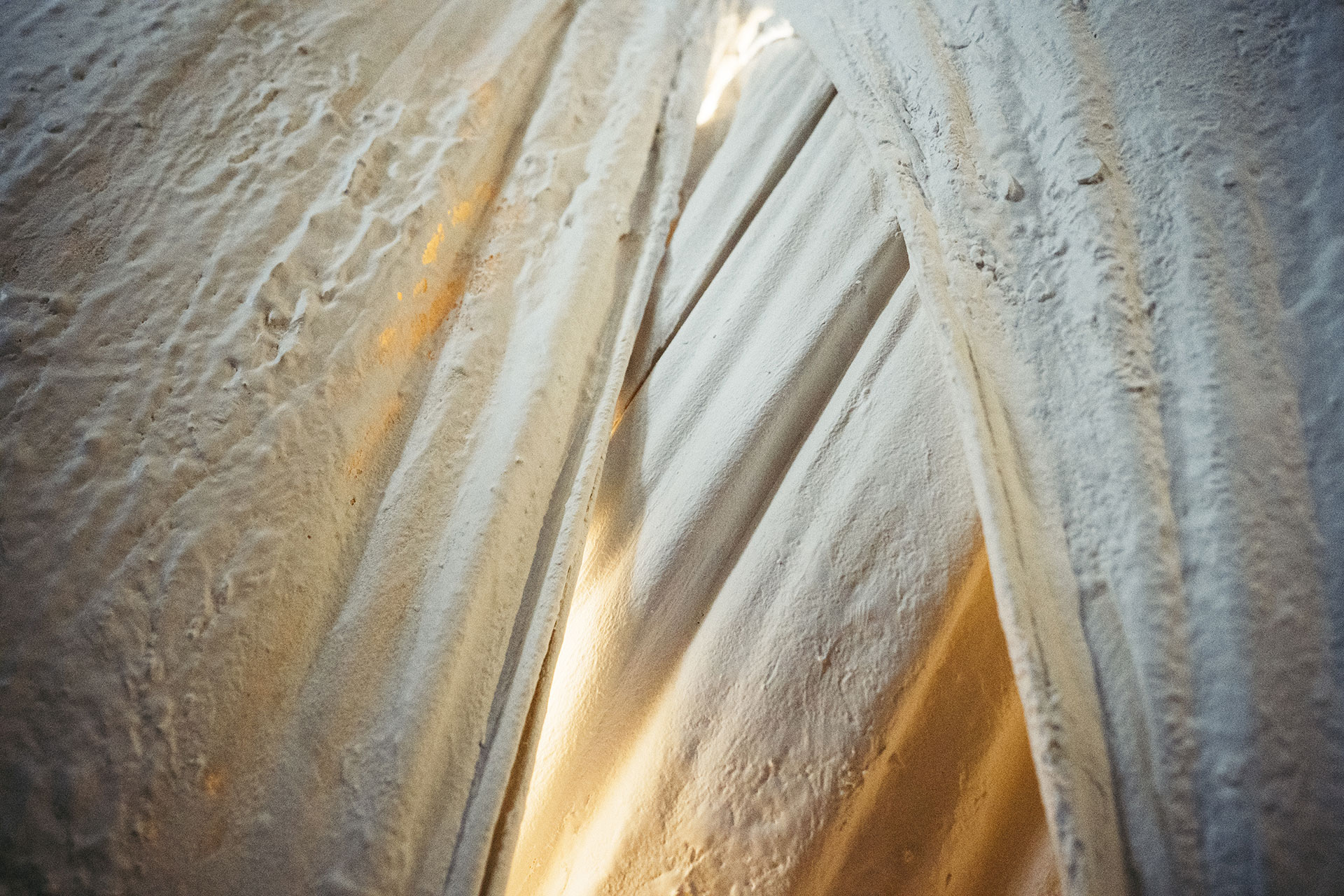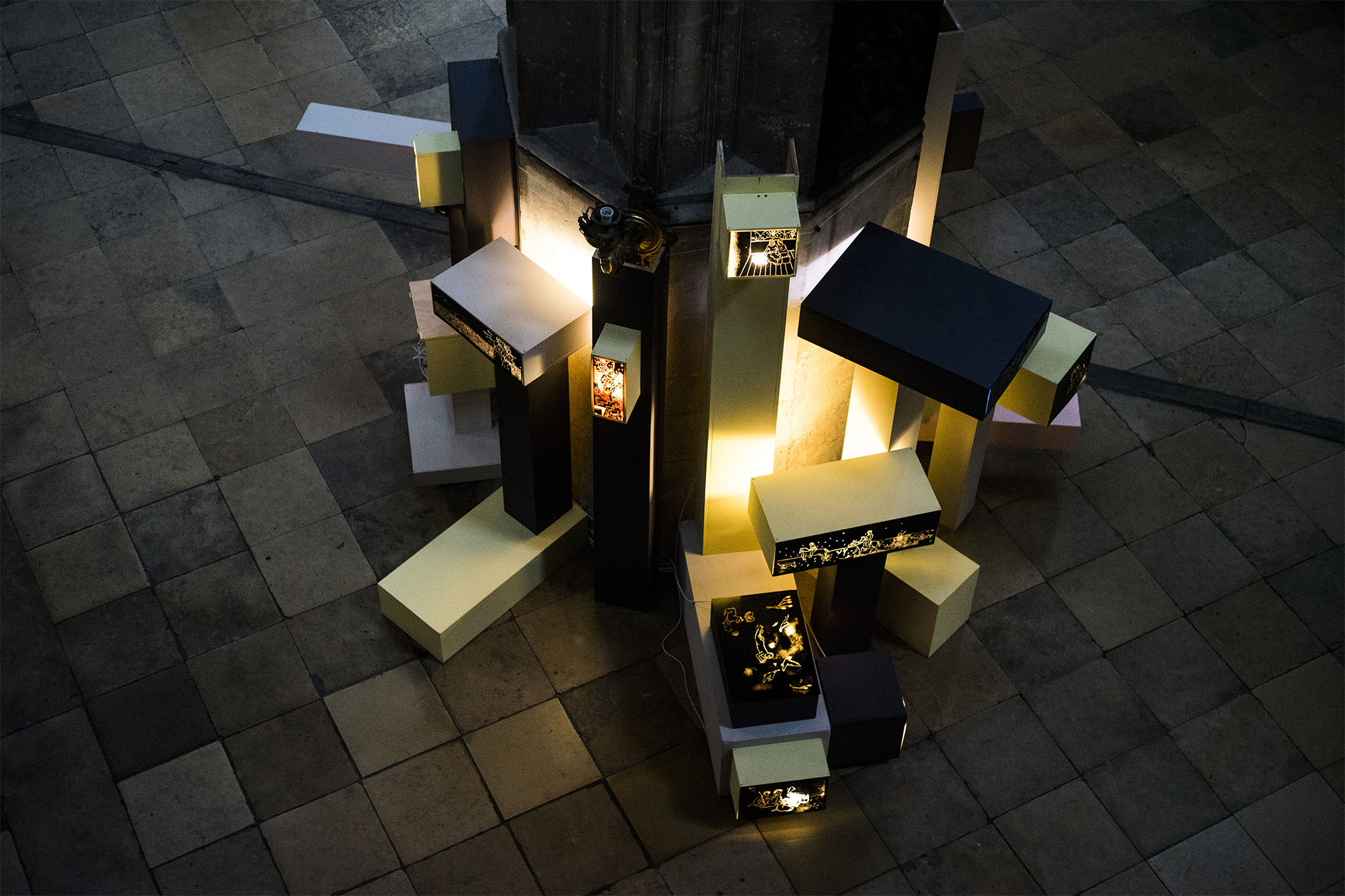
Crib
Max Coulon & Théophile Stern
Saint-Eustache church, Paris
2018
Between 2016 and 2020, Rubis Mécénat collaborated with the Beaux-Arts de Paris on a call for projects aimed at the school’s students, to create a contemporary crib for the Saint-Eustache church.
The 2018 winners, Max Coulon and Théophile Stern, conceived the installation ‘Crib’, exhibited at the church from December 2018 to January 2019.
The artists have very diverse aesthetic and spiritual backgrounds, but these differences inspired their desire to create a new work of art. One of them is carving small limewood figures, and the other is creating a huge plaster and metal sculpture reminiscent of sand dunes in the desert, the intersecting ribs of gothic churches, or urban building sites on our housing estates. In this space, simple, self-effacing people remind us that a crib is not restricted to a circumscribed area.



